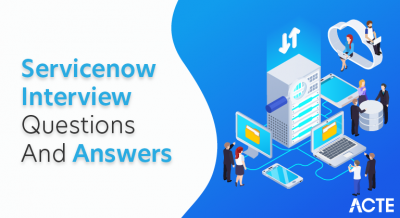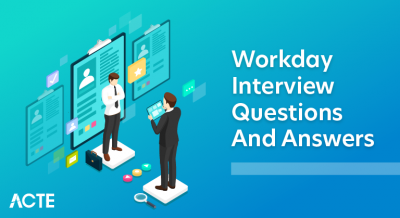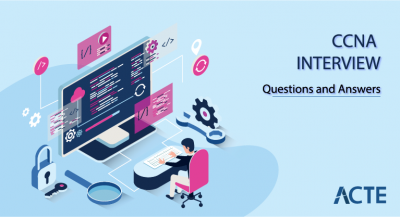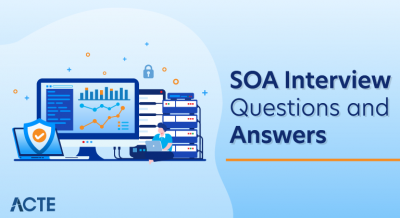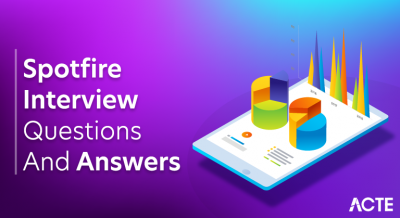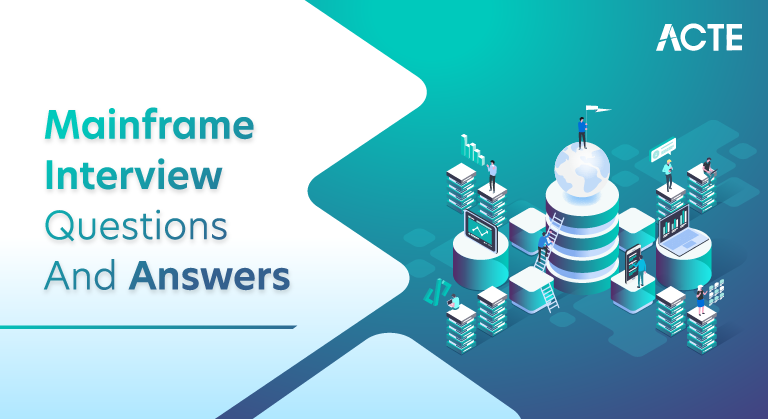
A Mainframe is a powerful, sizable computer system that is made to tackle difficult, complicated computing jobs. For many years, mainframes have been the foundation of corporate computing, and they still hold a key position in a variety of sectors, including banking, healthcare, government, and more.
1. What is a Mainframe computer?
Ans:
A mainframe computer is a high-performance, large-scale computing machine designed for handling complex commercial applications and processing massive amounts of data. Enterprises typically employ mainframe computers for critical tasks including transaction processing, data storage, and resource management.
2. What is DRDA?
Ans:
The abbreviation DRDA stands for Distributed Relational Database Architecture, which functions as a connection protocol designed to handle local databases. Vendors like IBM are the principal users of this. The architecture contains of guidelines that let applications and databases communicate with one another.
3. Explain the key characteristics of Mainframe systems.
Ans:
Mainframe systems are characterized by their high processing power, reliability, scalability, and ability to handle a large number of users and diverse workloads concurrently. They excel in data-centric operations, offer advanced virtualization and partitioning capabilities, and provide robust security features to ensure the integrity of critical business applications and data.
4. What is the significance of Mainframes in modern computing?
Ans:
- Robust Processing Power
- Reliability and Availability
- Scalability
- Data Management
- Legacy Application Support
5.Describe the major components of a Mainframe system.
Ans:
A mainframe system comprises several major components that work together to provide a high-performance computing environment. Here are the key components:
CPU: The CPU is the heart of the mainframe, responsible for executing instructions and performing calculations.
Memory (RAM): Mainframes have a substantial amount of RAM to store data and instructions for fast access by the CPU.
Channel Subsystem: Channels are specialized communication pathways that connect the mainframe’s CPU to external devices.
6. What is z/Architecture?
Ans:
z/Architecture, often referred to as z/Arch, is a family of mainframe computer architectures developed and maintained by IBM for its System z mainframe systems. It represents the architecture that underlies the design and operation of IBM’s mainframe processors.
7.What does Spool mean?
Ans:
Simultaneous Peripheral Operations On-Line, or Spool, is a buffering system that stores data for later processing and execution while also allowing for temporary storing of it.
8.What does “Mainframe testing” mean?
Ans:
The testing of computer services and applications is referred to as mainframe testing. On occasion, it involves targeting deployed code in the input data.
9.Explain the purpose of Job Control Language.
Ans:
A scripting language called Job Control Language (JCL) is used in mainframe computer settings to specify and manage the execution of batch processes. On a mainframe computer, batch processing refers to the automatic execution of a number of activities or programs in a predetermined order.
10.What are various features of Mainframe computing?
Ans:
Virtual storage, multiprogramming, batch processing, time-sharing, and spooling belong to the mainframe computing’s characteristics.
11.How does virtualization contribute to Mainframe efficiency?
Ans:
Virtualization plays a significant role in enhancing the efficiency of mainframe systems in various ways. Virtualization technology allows mainframes to optimize resource utilization, increase flexibility, and streamline management.
12.How does virtualization contribute to Mainframe efficiency?
Ans:
Virtualization plays a significant role in enhancing the efficiency of mainframe systems in various ways.
Here’s how virtualization contributes to mainframe efficiency:
- Server Consolidation
- Resource Sharing
- Isolation and Security
- Rapid Provisioning
13 . Explain the concept of CPs (Central Processors) and IFLs (Integrated Facility for Linux).
Ans:
Central Processors (CPs): Central Processors, often referred to as CPs, are the core processing units in an IBM mainframe system.
Integrated Facility for Linux (IFLs): Integrated Facility for Linux (IFL) is a specialized type of Central Processor designed specifically to run Linux workloads on IBM mainframes.
14. What is Direct Access Storage Device?
Ans:
A Direct Access Storage Device (DASD) is a data storage device that is commonly used in mainframe and business computer settings. DASDs give direct and random access to stored data, allowing applications and systems to obtain or change data without having to read the full storage media sequentially.
15.Explain the differences between Sequential and VSAM datasets.
Ans:
Sequential Datasets: A sequential dataset is a type of data storage where records are organized and stored in a linear, sequential order. Each record is located after the previous one, and access to the data is typically performed sequentially, from the beginning of the dataset to the end.
VSAM Datasets: Virtual Storage Access Method, or VSAM, is an IBM-supplied data management technology for mainframe systems. VSAM datasets are intended to offer more sophisticated access mechanisms than plain sequential datasets.
16. What differentiates dynamic SQL from static SQL?
Ans:
Because a dynamic SQL statement is created at runtime, it cannot be hard-coded into the program. During the course of the SQL application’s execution, this statement is prepared. Static SQL, on the other hand, is a type of SQL statement that may be hard-coded into an application and does not alter during runtime.
17. How does Data Facility Storage Management Subsystem work?
Ans:
It is a fixed of software additives and utilities supplied by IBM for coping with garage resources on IBM mainframe systems. DFSMS is designed to successfully manipulate, allocate, and control the garage gadgets and datasets utilized in mainframe environments.
18.What is an LPAR?
Ans:
An LPAR, which stands for Logical Partition, is a virtualization technology used in mainframe and high-end server environments. LPAR allows a single physical computer system to be divided into multiple, independent virtual machines, each of which behaves like a separate, standalone computer.
19.How are Mainframes connected to other systems in a network?
Ans:
Mainframes are typically connected to other systems in a network by following ways Network Protocols, Terminal Emulation, Web Services, Middleware and File Transfer Protocols.
20.Explain the purpose of TCP/IP on Mainframes.
Ans:
Networking protocols known as TCP/IP (Transmission Control Protocol/Internet Protocol) specify how data is sent, routed, and received via networks. It serves as the building block of the contemporary internet and facilitates communication between various systems and equipment.
21.What is COBOL?
Ans:
Common Business Oriented Language (COBOL), a high-level programming language, was created primarily for business and data processing applications.
22.Describe the features of PL/I and Assembler languages.
Ans:
PL/I (Programming Language One): PL/I is a high-level programming language designed for general-purpose programming, combining features from multiple languages.
Assembler Language: Assembler is a low-level programming language used for direct control of a computer’s hardware.
23. How does the Mainframe support modern programming languages like Java and Python?
Ans:
Specialized Java Virtual Machines (JVMs) and Python interpreters are installed on mainframes, enabling efficient execution of Java and Python applications while interfacing with mainframe resources and external systems through APIs and connectors.
24. Explain Resource Access Control Facility and its role in security.
Ans:
The Resource Access Control Facility (RACF) is an IBM mainframe security management solution. By implementing permission and authentication techniques, RACF is meant to regulate access to diverse resources such as datasets, applications, and system operations.
25.Discuss the importance of encryption in Mainframe environments.
Ans:
Encryption holds immense significance in mainframe environments due to the critical nature of the data processed and stored. Mainframes often handle sensitive information, from financial records to personal data, making them prime targets for cyberattacks.
26. What is Information Management System?
Ans:
A parameter action in Tableau is an interactive feature that empowers users to modify parameter values, thereby influencing calculations, filters, and visual elements within a dashboard. Unlike filter actions that impact data directly, parameter actions enable users to control aspects of a visualization without altering the underlying data. By establishing a connection between a user’s interaction and a parameter’s value, parameter actions offer a flexible and engaging way to customize the behavior and appearance of visualizations in response to user input.
27.Describe the differences between IMS and DB2.
Ans:
IMS: IMS primarily uses the Data Language/I (DL/I) for data access and manipulation. DL/I is specific to IMS and may require a different skill set for developers.
DB2: DB2 supports SQL (Structured Query Language), a standardized and widely adopted language for querying and managing relational databases. SQL is more intuitive and easier for developers to work with.
28. How does SQL fit into Mainframe database management?
Ans:
SQL (Structured Query Language) plays a significant role in mainframe database management, just as it does in other computing environments. Mainframes often host various types of databases, including relational databases, where SQL is a fundamental tool for data retrieval, manipulation, and management.
29.What is a batch job?
Ans:
Batch jobs are commonly used in computing environments, including mainframes, to automate tasks that do not require immediate user input.
30.What are the divisions in a COBOL project?
Ans:
A COBOL program is divided into four sections: the identification section, the environment section, the data section, and the method section.
31.How do you troubleshoot and manage batch job failures?
Ans:
Troubleshooting and managing batch job failures is a crucial aspect of maintaining the reliability and efficiency of computing systems, especially in mainframe environments where batch processing is prevalent.
32.How do you troubleshoot and manage batch job failures?
Ans:
Here are steps and strategies for handling batch job failures:
Error Notification and Monitoring: Implement a robust monitoring system that can detect batch job failures promptly.
Log Analysis: Review log files generated by batch jobs for error messages, warnings, and other relevant information.
Error Identification: Determine the specific error or failure that occurred during the batch job’s execution.
Data Integrity and Recovery: Assess the impact of the batch job failure on data integrity.
33.Describe Customer Information Control System.
Ans:
The Customer Information Control System (CICS) is a transaction processing system that is widely used on mainframe computers. It provides a runtime environment for executing online transaction processing (OLTP) applications, which are designed to handle a high volume of interactive transactions in real-time.
34.How does COBOL define table declaration?
Ans:
As a linear data structure that consists of a number of distinct data items of the same kind, arrays are referred to as tables in COBOL. Only level numbers from 02 to 49 can be utilized with the table that is defined by the occurrence clause.
35.How do Mainframes handle real-time transaction processing?
Ans:
Mainframes excel at real-time transaction processing by leveraging their high processing power, parallel processing capabilities, large memory, and robust architecture. They execute complex transactional logic swiftly, process multiple transactions in parallel, store frequently accessed data in ample memory, and ensure data integrity through mechanisms like logging and recovery.
36.Explain System Management Facilities.
Ans:
System Management Facilities (SMF) is a component of IBM’s mainframe operating systems, including z/OS (previously known as MVS or OS/390), that provides a comprehensive framework for collecting, recording, and managing system and application performance and operational data.
37.How can you identify performance bottlenecks on a Mainframe system?
Ans:
Identifying performance bottlenecks on a mainframe system involves a systematic analysis of various system resources and components to pinpoint areas where performance is suboptimal.
38.What is WLM (Workload Management), and how does it optimize system resources?
Ans:
Workload Management (WLM) is a mainframe system component that optimizes system resources by classifying and prioritizing workloads based on business needs and performance objectives. It ensures that critical workloads receive the necessary resources while efficiently utilizing available CPU, memory, and I/O to meet performance goals.
39.What is Parallel Sysplex?
Ans:
Parallel Sysplex is a high-availability and scalability architecture used in IBM mainframe environments, primarily with the z/OS operating system. It’s designed to provide enhanced reliability, availability, and scalability for mission-critical applications and data in large-scale mainframe environments.
40.Describe the concept of data replication for disaster recovery.
Ans:
Data replication is a critical strategy in disaster recovery planning. It involves the process of creating and maintaining copies of data from one location or system to another, typically at a remote site.
41.How do you ensure business continuity in Mainframe environments?
Ans:
To ensure business continuity in mainframe environments, a multi-faceted approach is crucial. This involves implementing high-availability architectures with redundancy and failover mechanisms, continuous data replication to remote sites, regular backups, and thorough disaster recovery planning.
42.Explain the process of Mainframe migration to newer systems.
Ans:
Mainframe transfer to newer systems is a time-consuming and labor-intensive procedure. It starts with a thorough examination of the current mainframe environment and the definition of specific migration goals.
43.Discuss the benefits of adopting DevOps practices for Mainframe development.
Ans:
Accelerated Delivery: DevOps streamlines the development and deployment process, enabling faster delivery of mainframe applications and updates.
Improved Collaboration: DevOps promotes collaboration between development and operations teams, including those working on mainframe systems.
Increased Efficiency: Automation is a core aspect of DevOps.
Scalability: DevOps practices are scalable and adaptable, making them suitable for mainframe environments that handle large workloads.
44.What is z/OS Container Extensions (zCX)?
Ans:
z/OS Container Extensions (zCX) is a feature that allows mainframe users to run Linux on IBM Z containers directly on z/OS, the mainframe’s native operating system.
45.What is an Interactive System Productivity Facility?
Ans:
An IBM mainframe software package called the Interactive System Productivity Facility (ISPF) offers a selection of utilities and tools for the creation, administration, and personalization of interactive systems and applications.
46.Explain the purpose of SDSF
Ans:
SDSF provides a real-time view of batch jobs and started tasks running on the mainframe. It displays information about job names, statuses, resource consumption, and completion times.
47.Describe lock contention.
Ans:
Lock contention occurs when many objects attempt to run at the same time since DBD only permits one object to be accessed at a time. It happens when a process or thread tries to take over a lock that is being held by another.
48.What are the tools used for Mainframe debugging?
Ans:
IBM Debug Tool and Xpediter.
IBM IPCS (Interactive Problem Control System)
IBM OMEGAMON
BMC MainView
49.What is Capacity planning?
Ans:
Capacity planning is the process of determining the amount of processing power an organization’s IT infrastructure will need to meet existing and future needs while still performing at its very best.
50.How do you handle data migration during a Mainframe migration?
Ans:
Handling data migration during a mainframe migration involves a methodical approach. It begins with inventorying and assessing the data, followed by mapping and transforming data structures as needed.
51.What is COPYBOOK?
Ans:
COPYBOOK is used to store record formats that may be utilized by other programs. If the formats are the same, one COPYBOOK can be used for various documents or programs by selecting REPLACING.
52.What are the types of JCL statements ?
Ans:
The main types of JCL statements include:
- Execution Control Statements
- Job Step Control Statements
- Comment Statements
- Symbolic Parameters
53. What kinds of conditional statements are there in COBOL?
Ans:
The primary conditional statements in COBOL are:
- IF Statements
- EVALUATE Statement
- PERFORM UNTIL / VARYING
- INSPECT Statement
54.What kind of EVALUATE statements are there?
Ans:
- Simple EVALUATE
- ALSO and TALLYING
- CONDITIONS Range
- TRUE and FALSE Conditions
55.Explain the process of auditing Mainframe security.
Ans:
Mainframe security auditing is a critical technique for guaranteeing the security of sensitive data and resources in a mainframe system. Auditing entails thoroughly inspecting and assessing security controls, policies, and actions in order to detect vulnerabilities, compliance gaps, and potential security breaches.
56.What tools and practices are used to detect unauthorized access?
Ans:
Here are some common tools used to detect unauthorized access:
- Network Flow Analysis Tools
- Authentication and Access Monitoring
- Host-Based Security Agents
- Cloud Security Monitoring and Compliance Tools
- Security Information Sharing Platforms
57.How do Mainframe systems integrate with distributed systems?
Ans:
Mainframe systems integrate with distributed systems through various methods and technologies that enable seamless communication and data exchange. Middleware, web services, API gateways, and message queues act as intermediaries, facilitating interoperability.
58.What tools can be used to monitor Mainframe performance in real-time?
Ans:
- CA SYSVIEW Performance Management
- ASG-TMON Performance Analyzer
- Compuware Strobe
- Splunk for Mainframe
- Zabbix
- IBM Z APM Connect
59.How do you analyze performance metrics and make optimizations?
Ans:
Define Performance Objectives: Clearly define the performance objectives and goals for your mainframe environment.
Collect Performance Data: Utilize performance monitoring tools (e.g., IBM OMEGAMON, BMC MainView) to collect data on various aspects of mainframe performance.
Set Baselines: Establish performance baselines by collecting data over time to understand normal behavior.
60.What are the benefits of automation in Mainframe operations?
Ans:
- Reduced Human Error
- Improved Efficiency
- Cost Savings
- Resource Optimization
- Consistency and Compliance
61.What tools can be used for automating routine tasks on a Mainframe?
Ans:
- IBM Tivoli Workload Scheduler (TWS)
- CA Workload Automation (CA WA)
- BMC Control-M
- UiPath and Automation Anywhere
- IBM Cloud Automation Manager
62.How do you manage Mainframe resources like CPU, memory, and I/O?
Ans:
Managing mainframe resources like CPU, memory, and I/O involves a combination of strategies to ensure efficient system operation. This includes workload management policies to allocate CPU resources based on priorities, memory allocation and virtual storage optimization, I/O workload analysis and scheduling, and the use of caching and buffering techniques to minimize I/O delays.
63.What strategies can you employ to avoid resource contention?
Ans:
- Workload Isolation
- Resource Allocation Policies
- Dynamic Resource Adjustment
- Resource Reservations
- Resource Monitoring and Alerts
- Load Balancing
64.How does Memory Paging operate?
Ans:
Memory paging is a memory management technique used in modern computer systems to efficiently manage physical memory (RAM) and provide the illusion of a larger addressable memory space than what is physically available.
65.What considerations are important when managing capacity for a growing Mainframe environment?
Ans:
Several considerations are important when planning for and managing capacity in a growing mainframe environment:
- Performance Analysis
- Workload Forecasting
- Resource Sizing
- Scalability
- Capacity Planning Tools
66.How can hybrid cloud architectures be implemented with Mainframe systems?
Ans:
Implementing hybrid cloud architectures with mainframe systems involves integrating mainframe-based applications and data with cloud-based resources and services.
67.What steps are involved in creating a Mainframe disaster recovery plan?
Ans:
The steps involved in creating a mainframe disaster recovery plan:
- Risk Assessment
- Business Impact Analysis (BIA)
- Define Objectives and Scope
- Identify Recovery Sites
- Data Backup and Replication
68.How do you test the effectiveness of your disaster recovery plan?
Ans:
Common methods for testing the effectiveness of your disaster recovery plan:
Tabletop Exercises: Conduct tabletop exercises where key stakeholders gather to simulate various disaster scenarios and discuss their responses.
Partial Failover Testing: Test the failover and recovery of specific components or systems rather than the entire infrastructure.
Full-Scale Failover Testing: Perform full-scale failover testing where the entire mainframe environment is switched to the disaster recovery site.
69.Describe the different approaches to achieving high availability in Mainframe environments.
Ans:
Various approaches and technologies are used to achieve high availability in mainframe systems. Here are some common approaches:
- Clustering and Failover
- Load Balancing
- Fault Tolerance
- Data Replication
- Backup and Restore Procedures
70.What challenges might you encounter when migrating applications from one Mainframe system to another?
Ans:
Here are some common challenges you might encounter during a mainframe application migration:
Platform and Architecture Differences: Mainframes from different vendors or generations may have variations in hardware architecture, instruction sets, and operating systems.
Compatibility Issues: Older mainframe applications may rely on deprecated features or dependencies that are no longer supported on newer systems.
Data Migration: Migrating large volumes of data between mainframe systems can be time-consuming and error-prone.
71.How can you mitigate risks during a Mainframe migration project?
Ans:
Mitigating risks during a mainframe migration project is essential to ensure a smooth transition while minimizing disruptions to business operations. Here are several strategies to help mitigate risks:
- Comprehensive Planning
- Risk Assessment
- Contingency Planning
72.How do you secure network communications between Mainframe systems?
Ans:
This is achieved by implementing robust encryption protocols like SSL/TLS, using secure communication protocols, and enforcing strict access control through firewalls and segmentation.
73.What protocols and encryption methods are commonly used for Mainframe network security?
Ans:
Commonly used protocols and encryption methods for mainframe network security include:
- IPsec (Internet Protocol Security)
- SSH (Secure Shell)
- Kerberos
- SCP (Secure Copy Protocol)
- SNMPv3 (Simple Network Management Protocol version 3)
74.How does virtualization impact resource utilization on a Mainframe?
Ans:
Resource usage on a mainframe system may be greatly improved by virtualization. Technologies for mainframe virtualization make it possible to efficiently distribute and share hardware resources among several virtual machines (VMs) or logical partitions (LPARs).
75.Describe the best practices for backing up and recovering Mainframe data.
Ans:
Key practices include classifying and prioritizing data, establishing regular backup schedules, using data deduplication and encryption, maintaining offsite copies, and conducting regular testing and documentation.
76.How can you ensure data integrity during backup and recovery operations?
Ans:
Use checksums or cryptographic hash functions to verify the integrity of data before and after backup. Compare checksums or hashes before and after restoration to detect any changes or corruption.
77.What regulatory requirements might impact Mainframe operations and data management?
Ans:
Common regulatory requirements that may impact mainframe operations and data management:
- General Data Protection Regulation (GDPR)
- Health Insurance Portability and Accountability Act (HIPAA)
- Sarbanes-Oxley Act (SOX)
- Federal Information Security Management Act (FISMA)
78.What is MQSeries?
Ans:
This middleware ensures guaranteed message delivery, supports various messaging models, and offers essential security features, making it a pivotal tool for enterprise-level messaging and seamless communication within complex IT environments.
79.How can Mainframe middleware improve the integration of disparate systems?
Ans:
Mainframe middleware can perform data transformation and mapping between different data formats used by disparate systems. This ensures that data from one system can be seamlessly understood and processed by another.
80.What are the strategies used for Scaling Mainframe?
Ans:
- Vertical Scaling (Upgrading Hardware)
- Horizontal Scaling (Parallel Processing)
- Data Management
- Load Balancing and Workload Management
- High Availability and Disaster Recovery
81.What challenges might arise when scaling Mainframe resources?
Ans:
Cost: Upgrading mainframe hardware and software licenses can be costly.
Complexity: As mainframe environments grow and become more complex, managing and maintaining the expanded infrastructure can become increasingly challenging.
Downtime and Disruption: Implementing hardware upgrades or major software changes often requires downtime or system disruptions.
Compatibility Issues: Scaling may necessitate changes to existing software applications or integrations.
82.How would you approach diagnosing a performance issue on a Mainframe?
Ans:
Gather Comprehensive Data: Begin by collecting detailed performance data, including CPU usage, memory utilization, I/O activity, and network metrics.
Isolate the Problem: Narrow down the scope of the issue by identifying whether it’s a system-wide problem or specific to certain applications or workloads.
Collaborate with Experts: Engage a multidisciplinary team of mainframe administrators, database administrators, and application developers to collaborate on diagnosis.
Use Comparative Analysis: Compare current performance data with historical data to spot trends or deviations.
83.Describe the steps you would take to troubleshoot a system crash.
Ans:
- Assess the Situation
- Restart and Observe
- Review System Logs
- Inspect Hardware and Connections
84.How does Workload Manager (WLM) allocate resources to different tasks on a mainframe?
Ans:
It dynamically assigns resources like CPU, memory, and I/O based on defined service levels and workload importance. WLM continually monitors system performance and adapts resource allocations in real-time to meet workload demands, preventing resource contention and ensuring that mission-critical tasks receive the necessary resources to maintain smooth operation.
85.What factors influence the decision-making process in resource allocation?
Ans:
- Workload Characteristics
- Service Level Agreements (SLAs)
- Performance Monitoring
- Resource Availability
- Workload Classification
86.What is the difference between “INCLUDE” and “COPY”? .
Ans:
INCLUDE: The “INCLUDE” directive is often used in scripting languages and configuration files to incorporate the content of another file, typically for configuration settings, header files, or library imports.
COPY: The “COPY” directive is typically used in programming languages like COBOL and assembly language to include the content of another source file within the current source file.
87.What is DB2 in Deadlock?
Ans:
Deadlock situation creates a circular dependency, preventing any of the transactions from progressing. DB2, like other database management systems, employs mechanisms to detect and resolve deadlocks.
88.Name some automation tools commonly used in Mainframe environments.
Ans:
- IBM z/OSMF (z/OS Management Facility)
- IBM SMP/E (System Modification Program/Extended)
- IBM RACF (Resource Access Control Facility)
- IBM zSecure
- Syncsort Ironstream
89.How can automation improve efficiency in routine Mainframe tasks?
Ans:
Automation can significantly improve efficiency in routine mainframe tasks by reducing manual intervention, minimizing errors, and accelerating processes.
90.Describe about Linkage Section
Ans:
In mainframe programming languages like COBOL, the Linkage Section is a critical part of a program’s data division. It serves as an interface for passing data between different program modules or between a program and external components, such as subprograms or operating system services.
91.How can Mainframe workloads be migrated to the cloud?
Ans:
Assessment and Planning: Begin with a thorough assessment of existing mainframe workloads, identify objectives, and select the appropriate cloud model (IaaS, PaaS, or SaaS).
Data Migration: Plan and execute data migration strategies to securely transfer mainframe data to the cloud, ensuring data integrity throughout the process.
Application Refactoring: Consider whether mainframe applications need refactoring or modernization to run effectively in a cloud environment, and perform necessary adjustments.
Testing and Validation: Rigorously test migrated workloads in the cloud, addressing performance, security, and compliance requirements to ensure a successful transition.
92.What tools are available for performance tuning?
Ans:
- Compuware Strobe
- Syncsort Ironstream
- IBM z/OS Performance Toolkit
- IBM Workload Manager (WLM)
- IBM Health Checker for z/OS
How can DevOps practices be integrated into Mainframe development processes?
Ans:
DevOps integration in mainframe development involves fostering a collaborative culture, automating testing and deployment, and aligning mainframe workflows with CI/CD pipelines to accelerate software delivery. It also includes modernizing mainframe infrastructure and ensuring compliance with security and quality standards.
94.Discuss the benefits of adopting DevOps for Mainframe applications.
Ans:
- Accelerated Software Delivery
- Enhanced Collaboration
- Improved Quality and Reliability
- Reduced Manual Effort
- Efficient Resource Utilization
95.What is STOPRUN?
Ans:
STOP RUN is a COBOL statement used to terminate the execution of a COBOL program. It is commonly used as the final statement in a COBOL program to signal the end of the program’s execution.
96.What is Database Descriptor?
Ans:
Database Descriptor refers to a data structure or file that contains metadata or information about a database or data set. This information is crucial for query optimization, data management, and access control within the DB2 database management system.
97.Describe about Binary Search.
Ans:
Binary search, also known as binary chop, is a widely used and efficient searching algorithm that is employed to locate a specific target element within a sorted collection or array. It operates by repeatedly dividing the search space in half, discarding one of the two halves based on a comparison with the target element.
98.Define Shareopts
Ans:
Share options are commonly used in mainframe environments to manage resource allocation and ensure that critical workloads receive the necessary resources while preventing resource contention.
99.What is DBKEY?
Ans:
DBKEY” typically refers to a database key or a record identifier used in various database management systems (DBMS) and data access methods. The term “DBKEY” can have different meanings depending on the specific database system or technology being used.
100.Explain how you would optimize the performance of a Mainframe application.
Ans:
Optimizing the performance of a mainframe application involves a combination of strategies and best practices aimed at improving the application’s responsiveness, resource utilization, and overall efficiency.


